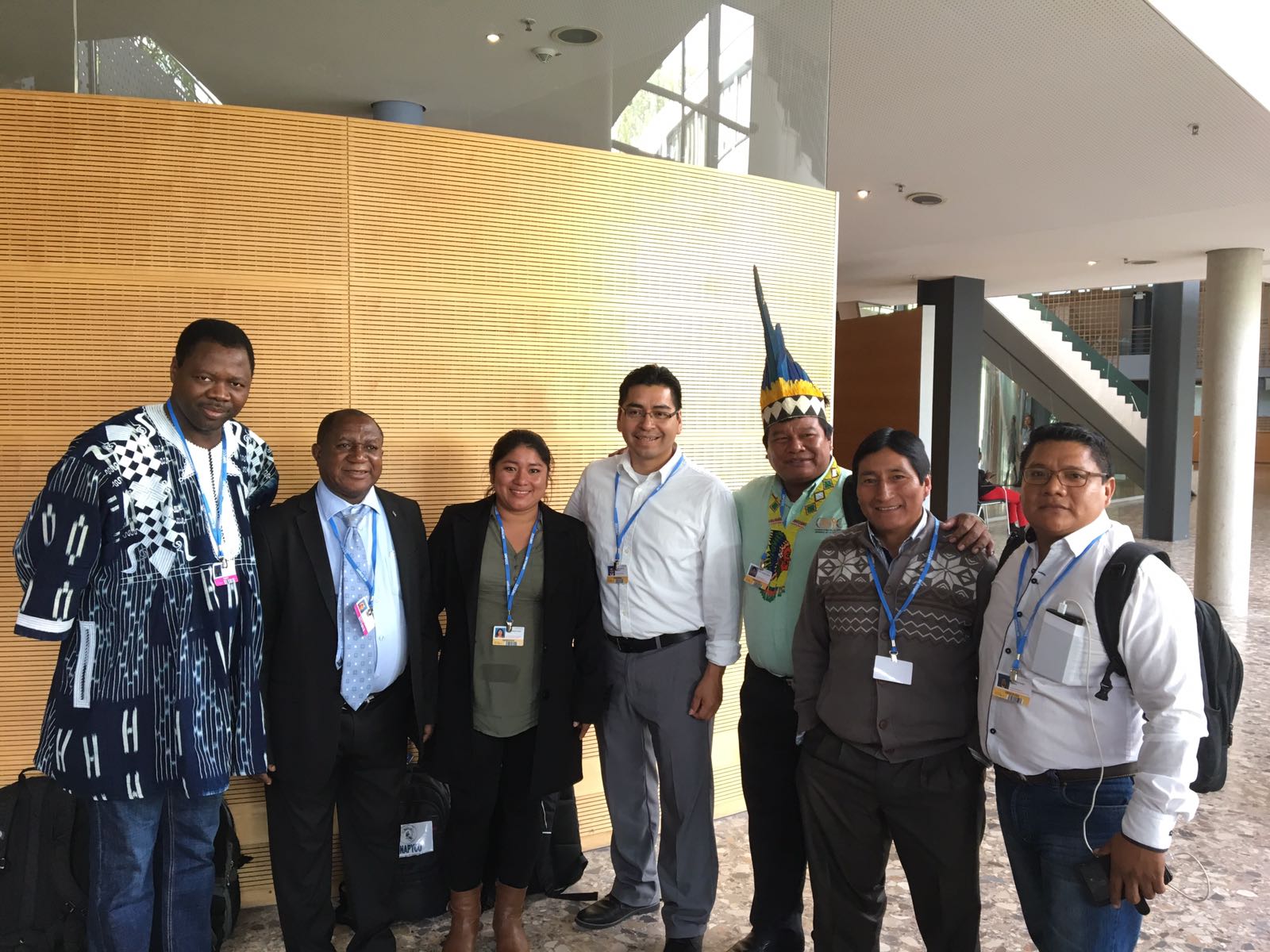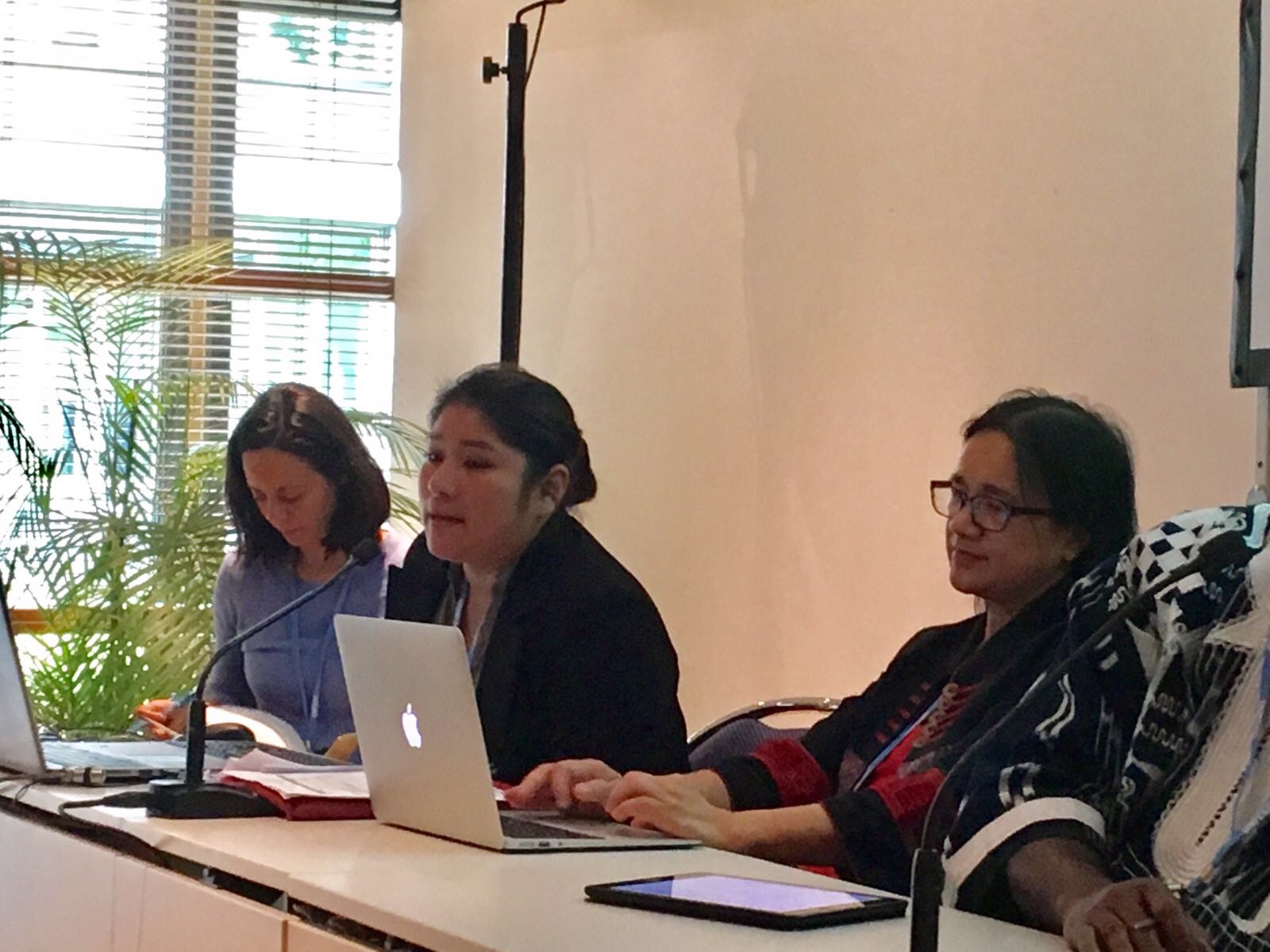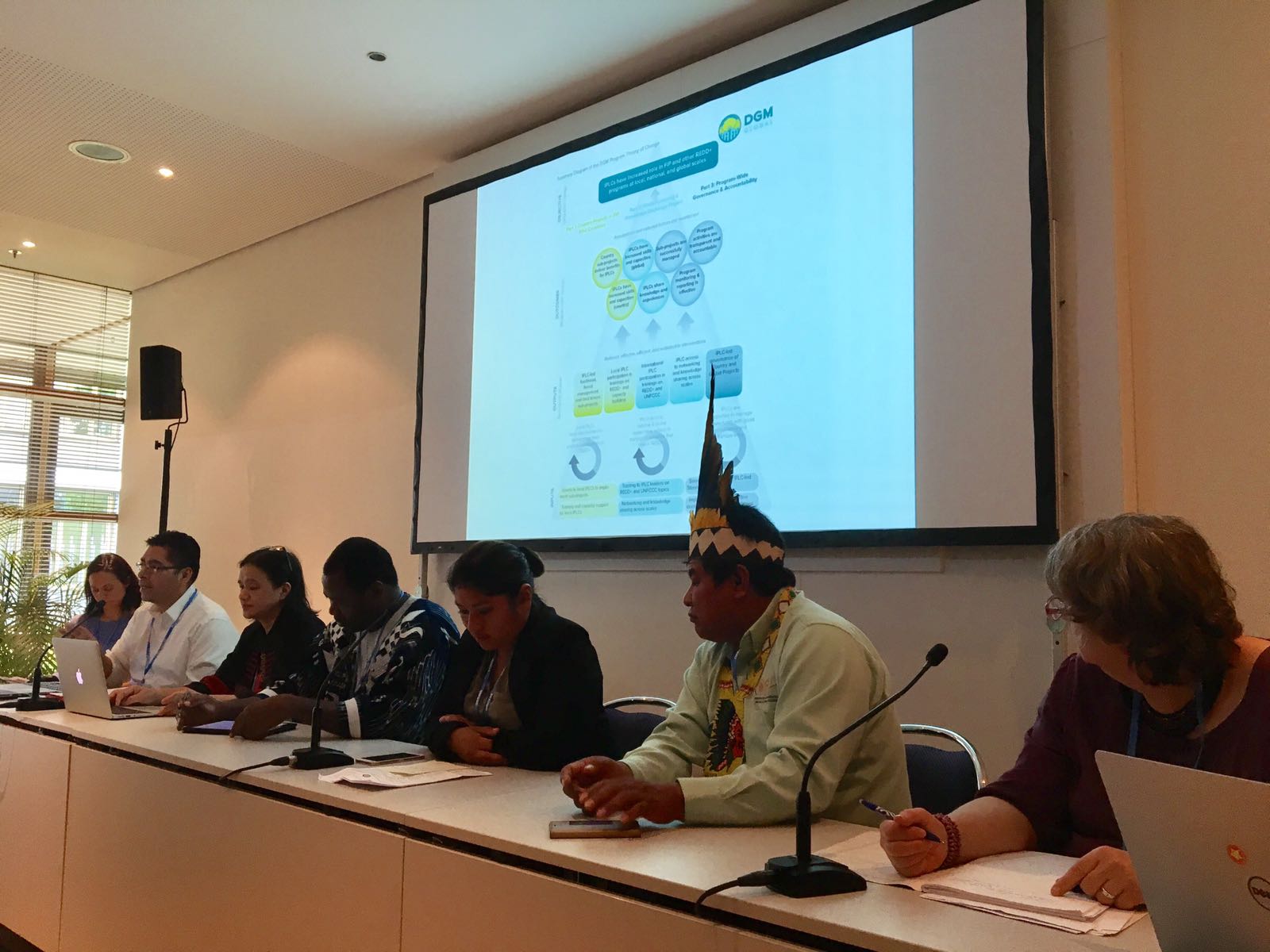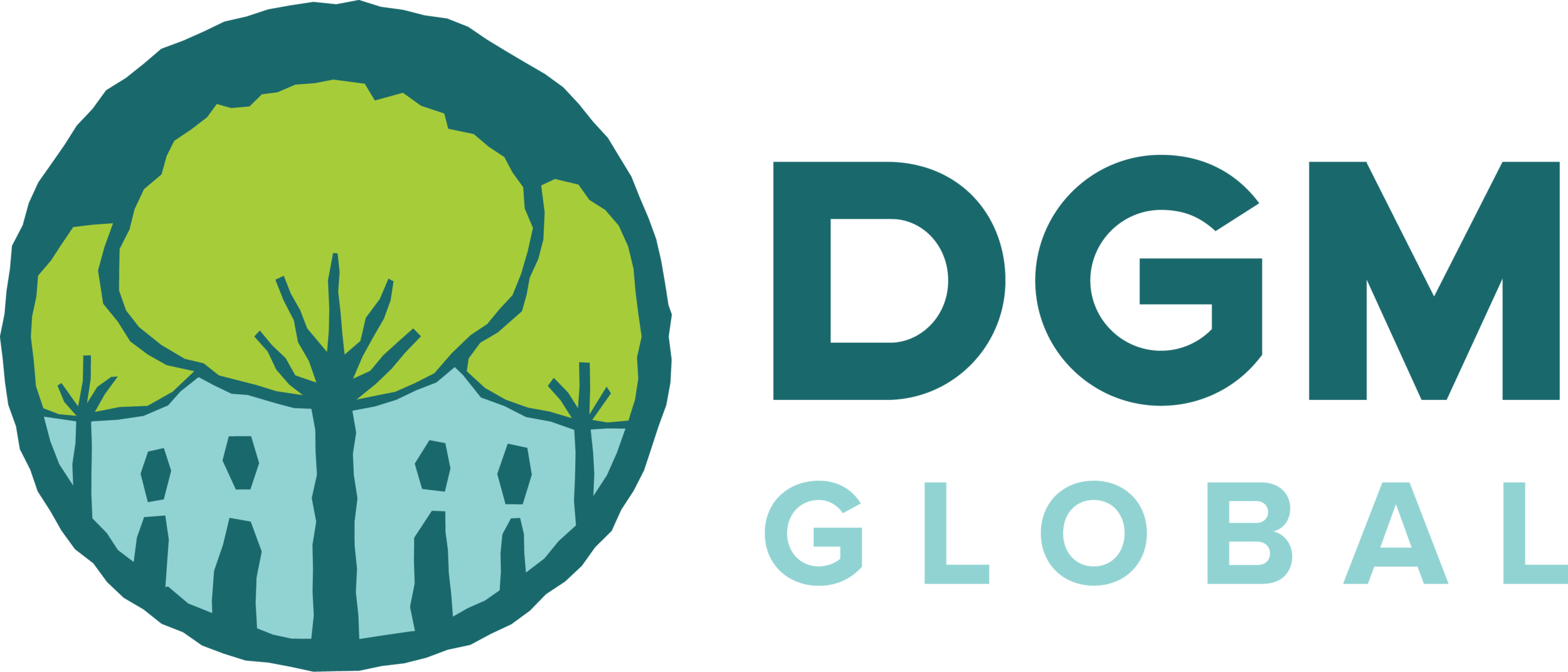Indigenous Knowledge and Leadership Delivering Climate Action on Forests
DGM Global cannot guarantee the accuracy of Google translations. In case of discrepancies, the original language takes precedence.
Representatives of Conservation International, the Dedicated Grant Mechanism for Indigenous Peoples and Local Communities (DGM), and la Coordinadora de las Organizaciones Indígenas de la Cuenca Amazónica (COICA) co-hosted a side event today at the 46th meeting of the Subsidiary Body for Scientific and Technological Advice (SBSTA) of the United Nations Framework Convention on Climate Change (UNFCCC). During the event, several speakers shared their experiences as members of indigenous peoples and local communities (IPLCs) pursuing forest-related climate action. A summary of these presentations is below, and the full presentation is available through the UNFCCC Climate Change Studio.




Following an introduction by Lina Barrera of Conservation International, Grace Balawag, co-chair of the DGM Global Steering Committee, gave an overview of the DGM, its relation to the Forest Investment Program, and its unique governance structure. To supplement this information, Johnson Cerda, Technical Director of the DGM Global Executing Agency presented the DGM's objectives and theory of change. This overview set the stage for case studies from two country projects: DGM Saweto Peru and DGM Burkina Faso.
Nery Zapata, representing DGM Saweto Peru and the Asociación Interétnica de Desarrollo de la Selva Peruana (AIDESEP), spoke about the progress of the project to date. In this early stage, DGM Saweto Peru has put much of its focus on support for legal recognition of indigenous peoples, titling of traditional indigenous lands, and community forest management. The project has approved funding for 17 local organizations to pursue these goals, and they are already making substantial progress. Over 50% of the projects supporting legal recognition are in the final stages of that process, and 81% of land titling projects have completed their initial fieldwork. In total, the land titling projects are expected to cover an area of approximately 131,900 hectares (over 500 square miles). In pursuit of more sustainable community forest management, the DGM is also supporting 29 native communities in their efforts to install improved fish farms, implement agroforestry systems, and strengthen tourist activities. Ms. Zapata ended her presentation by adding that the DGM is a mechanism that should be replicated to achieve greater effectiveness and sustainability in other projects.
Idrissa Zeba, chair of the National Steering Committee of DGM Burkina Faso and soon-to-be co-chair of the Global Steering Committee, presented an update next on the status of the DGM Burkina Faso project. Officially launched in March 2016, DGM Burkina Faso has made substantial progress over the past year. By July 2016, the project had received 651 sub-project proposals, which demonstrates the substantial demand for direct IPLC access to climate finance. Over the next few months, the project team reviewed these proposals and selected 14 for implementation. The funds for these sub-projects were disbursed in March 2017, and they are planning to launch their next call for proposals by July 2017. He noted the great potential for the DGM to serve as a model for engagement with local communities in the fight against climate change.
In the final portion of the event, Edwin Vasquez Campos of COICA and Rodrigo de la Cruz of the World Wildlife Fund (WWF) gave a presentation on the relation between indigenous knowledge and the reduction of emissions in the Amazon basin, particularly in regards to the Amazon Indigenous REDD+ Project (RIA), being implemented jointly by COICA and WWF. RIA is a model for contributing to climate change solutions by reducing emissions through a holistic approach favored by indigenous peoples, which values forests on more than just their potential as carbon sinks. For example, indigenous use of the forest has maintained plant cover through, rotating use of soils, seasonal variability of diets, and the sustainable development and use of land for agriculture, hunting, and meditation.
Overall, this event was a good showcase of some of the ways that IPLC knowledge and leadership can contribute to climate action, but much of that potential remains underutilized. Through greater direct access to climate finance and the development of an IPLC Knowledge Platform, as included in Decision 135 of the Paris Agreement, this leadership and knowledge can be effective at a much larger scale.
